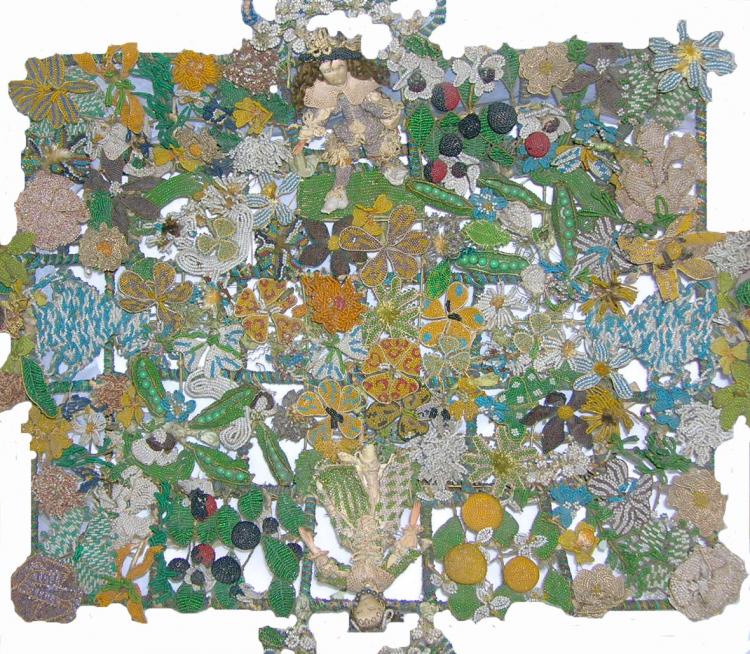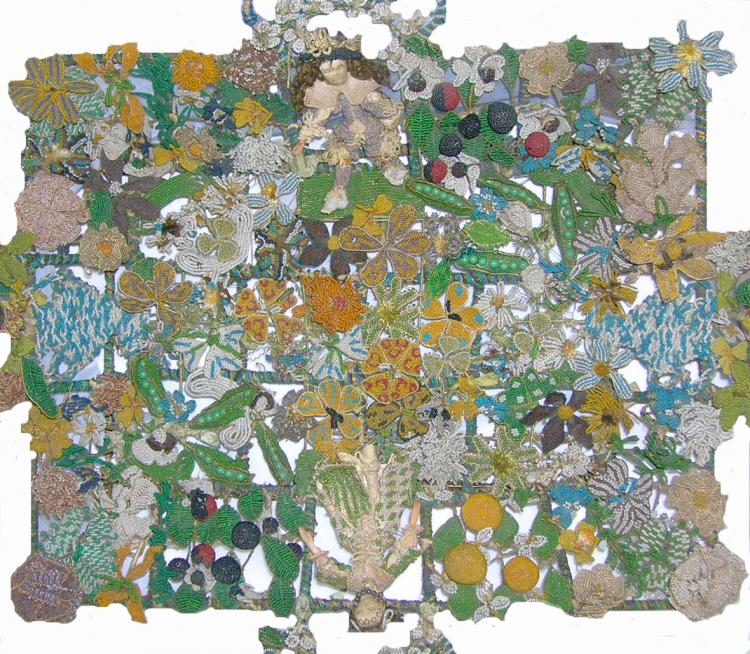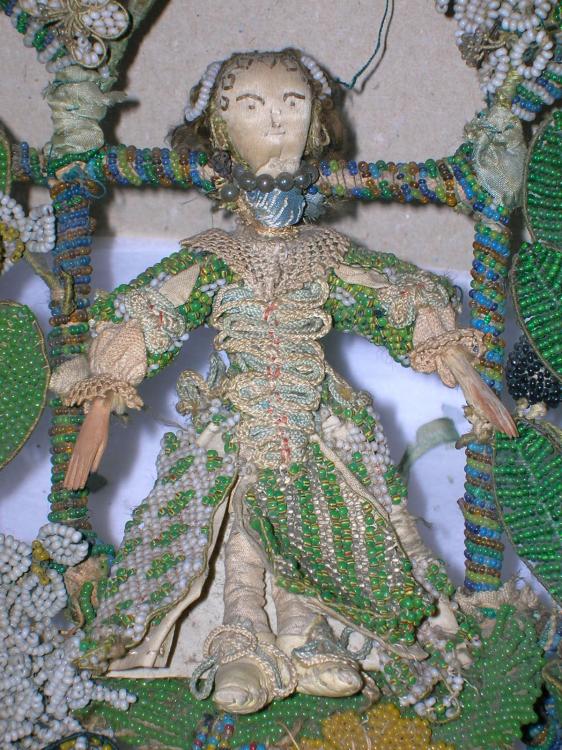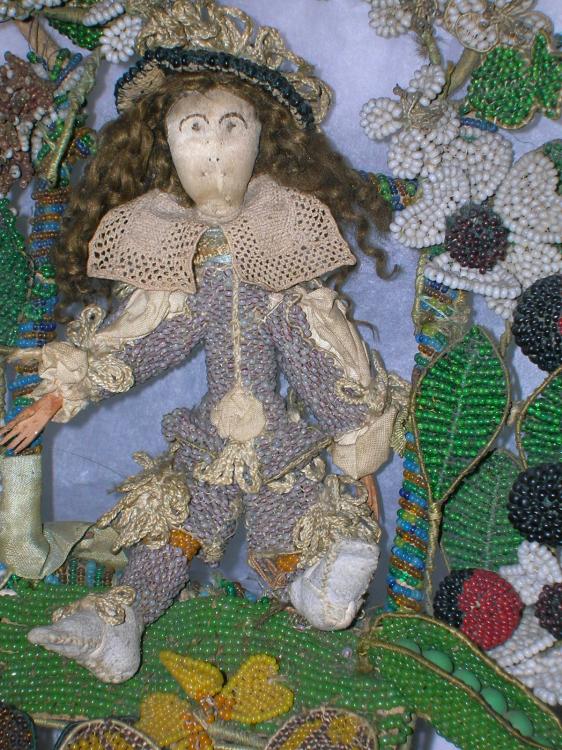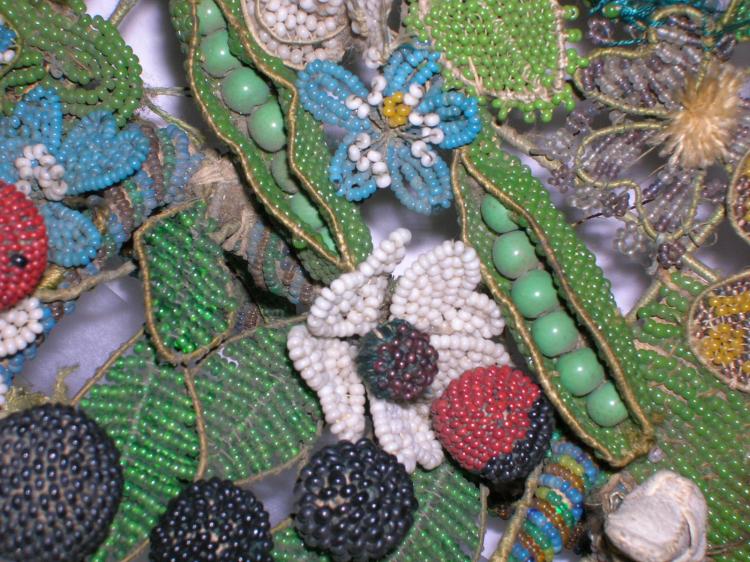Beaded baskets of this date (c1650) are rare. It is thought that they were used during christening ceremonies to hold the baby’s clothing or gifts, and were kept as a commemorative of the event.
Made of tiny coloured seed beads on a wire frame bound with silk, the decorative motifs of flowers, leaves, vegetables and fruit are representative of a style of beadwork that developed in England in the mid 17th century. The gentleman and lady shown are dressed in costume typical of the period reflecting fashion trends made popular by royalty. Many embroideries and beadworks of this date show King Charles II and Catherine of Braganza whom he married in 1662.
We associate bead making with Venice and it was the margaritaro who were responsible for the tiny glass beads used in embroidery. The towns of Amsterdam and Middleburg in Holland made similar beads to those from Venice (because their beadmakers were Venetians) and large quantities of the beads were exported to England during the 17th century. From around 1630 until approximately 1680, the needlework education of young girls from affluent families consisted of first mastering coloured silkwork and whitework by producing a sampler or two, followed by embroidering a box or casket in flat or raised silk and metal work, and finally creating some item in beadwork. The beadwork objects were made entirely of beads, as distinct from using beads as an enhancement to embroidery.
To create the baskets, tiny glass beads, known as seed beads, were strung on fine wire and linen thread, sometimes over padded areas backed with fabric for raised effects. An advantage of beadwork is that, unlike embroidery in silk and wool, beads keep their colour.
Donor: Lady Cornwallis
Fine & Applied Art: Needlework
Accession: MNEMG 3.1912
